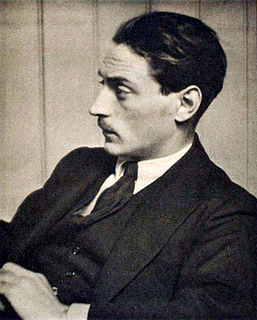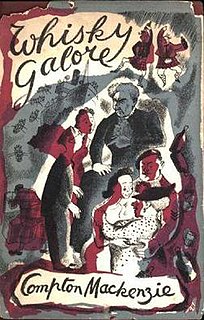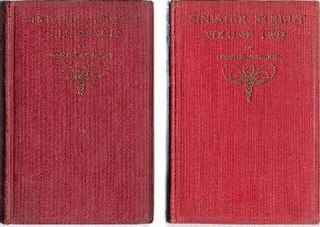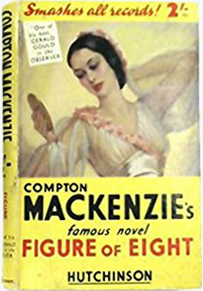
Virginia Lilian Emmeline Compton-Mackenzie, CBE, known professionally as Fay Compton, was an English actress. She appeared in several films, and made many broadcasts, but was best known for her stage performances. She was known for her versatility, and appeared in Shakespeare, drawing room comedy, pantomime, modern drama, and classics such as Ibsen and Chekhov. In addition to performing in Britain, Compton appeared several times in the US, and toured Australia and New Zealand in a variety of stage plays.

Sir Edward Montague Compton Mackenzie, was an English-born Scottish writer of fiction, biography, histories and a memoir, as well as a cultural commentator, raconteur and lifelong Scottish nationalist. He was one of the co-founders in 1928 of the National Party of Scotland along with Hugh MacDiarmid, R. B. Cunninghame Graham and John MacCormick. He was knighted in 1952.

Whisky Galore is a novel written by Compton Mackenzie, published in 1947. It was adapted for the cinema under the title Whisky Galore!.

The Projector, 2.5 inch—more commonly known as the Northover Projector—was an ad hoc anti-tank weapon used by the British Army and Home Guard during the Second World War.

Whisky Galore! is a 1949 British comedy film produced by Ealing Studios, starring Basil Radford, Bruce Seton, Joan Greenwood and Gordon Jackson. It was the directorial debut of Alexander Mackendrick; the screenplay was by Compton Mackenzie, an adaptation of his 1947 novel Whisky Galore, and Angus MacPhail. The story—based on a true event—concerns a shipwreck off a fictional Scottish island, the inhabitants of which have run out of whisky because of wartime rationing. The islanders find out the ship is carrying 50,000 cases of whisky, some of which they salvage, against the opposition of the local Customs and Excise men.

Sinister Street is a 1913–1914 novel by Compton Mackenzie. It is a kind of Bildungsroman or novel about growing up, and concerns two children, Michael Fane and his sister Stella. Both of them are born out of wedlock, something which was frowned upon at the time, but from rich parents.

The Battle of Kissoué was part of the Allied advance on Damascus in Syria during the Syria-Lebanon campaign in World War II. The battle is noted for the confrontation between Vichy French and the Free French Forces. The Free French met with stiff resistance from the Vichy French.
Eilean Aigas (NH4641) is an island in the River Beauly, Scotland, in Kiltarlity parish in traditional Inverness-shire, now Highland Region. It is most notable for the mansion on it at its north end, which was formerly owned by the Sobieski Stuarts and rented by author and Scottish nationalist Compton Mackenzie from Lord Fraser of Lovat. It is joined to the bank by a narrow white bridge.
Andro Ian Robert Linklater was a Scottish non-fiction writer and historian.

The Monarch of the Glen is a Scottish comic farce novel written by English-born Scottish author Compton Mackenzie and published in 1941. The first in Mackenzie's Highland Novels series, it depicts the life in the fictional Scottish castle of Glenbogle. The television programme Monarch of the Glen is very loosely based on the series.
The Four Winds of Love is the overall title for a series of six novels written by Compton Mackenzie, The East Wind of Love (1937), The South Wind of Love (1938), The West Wind of Love (1940), West to North (1942), The North Wind of Love, Book 1 (1944) and The North Wind of Love, Book 2 (1945), which taken together constitute a major fictional chronicle of the first forty years of the twentieth century. The main protagonist of the hexalogy is the semi-autobiographical character of John Ogilvie.

Buttercups and Daisies is a 1931 comedy novel by the British writer Compton Mackenzie.

Figure of Eight is a 1936, novel by the British writer Compton Mackenzie.

Rogues and Vagabonds is a 1927 historical novel by the British writer Compton Mackenzie. It is set in the Victorian era.

Rich Relatives is a 1921 comedy novel by the British writer Compton Mackenzie.

Coral is a 1925 novel by the British writer Compton Mackenzie. It is a sequel to his 1912 work Carnival.

Fairy Gold is a 1926 novel by the British writer Compton Mackenzie. A Cornish knight living on an island, who has lost his son during the First World War, resents a young English soldier stationed nearby.

Vestal Fire is a 1927 comedy novel by the British writer Compton Mackenzie. It was inspired by the time Mackenzie had spent living in Capri before the First World War.

April Fools is a 1930 comedy novel by the British writer Compton Mackenzie. It is the sequel to his 1919 work Poor Relations.
















